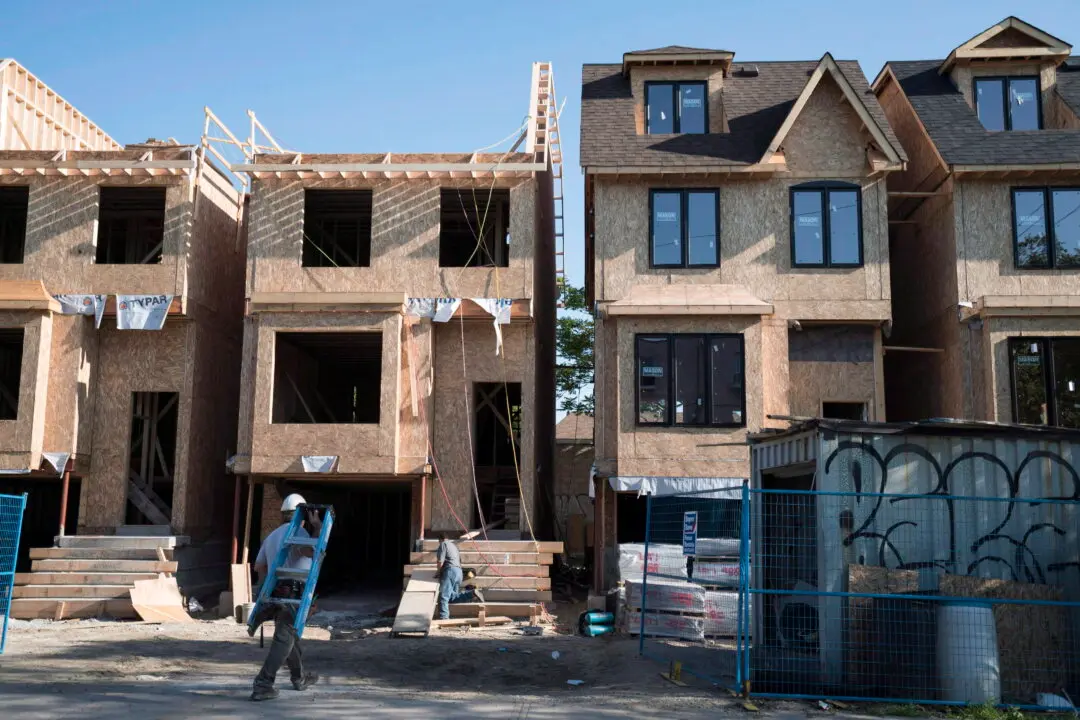Alleviating Canada’s housing affordability crisis revolves around increasing the supply of homes. But with Ontario’s environment of rising interest rates, labour shortages, high input costs, and even inter-provincial migration out of the bigger cities, analysts are suggesting solutions range from incentives for developers and builders to re-thinking land-use policies.
Ontario has a goal of building 1.5 million new homes by 2031, a target that many observers have said is unattainable.
“It will not be achieved but we have to maximize what we can do,” Benjamin Tal, CIBC’s deputy chief economist, told The Epoch Times in an interview on July 19.
Mr. Tal, a long-time advocate for more purpose-built rental units like large apartments, says that policy-makers must provide further incentives for developers.
“For example, eliminate the HST or reduce development charges, or provide accelerated depreciation, or sell developers land at reduced price if the project is purpose-built rental,” he said.
“In order to solve the affordability crisis in Canada, you need the developers. You need them.”
Mr. Tal wrote in a June 26 note to clients that waiving or deferring the HST would reduce the unit cost of a 400-unit project in Toronto by about $60,000, resulting in a materially lower rent while “unlocking tens of thousands of rental units across the country in short order.”
But urban policy expert Wendell Cox, a senior fellow with the Frontier Centre for Public Policy (FCPP) and principal of Demographia, told The Epoch Times on July 19 that there isn’t enough tax money available to incentivize developers and builders to construct enough housing to improve affordability. His focus is on public policies that have distorted the housing market by driving up the price of land.
“The fact is that sacred Greenbelt is largely responsible for having driven the price-to-income ratio in the Toronto area from about four in 2005 to almost 10. Almost all of that increase is in the land,” he said.
Urban containment policy has been strongly associated with higher house prices relative to incomes, he wrote in a 2021 analysis for the FCPP. Such policy includes prohibiting or rationing greenfield land development, putting boundaries on urban growth, and intensifying housing development within city limits.
“The only incentive that makes sense is finding a way to make it possible to build on inexpensive land.”
Mr. Cox made it clear that he’s not suggesting subsidies, while acknowledging that the land cost problem is not easily solved.
Business Sector Impacts
The Ontario Chamber of Commerce (OCC) says the housing affordability crisis is impacting the ability of businesses to attract and retain talent and that “the labour needed to build more housing is increasingly priced out of communities across the province.”
In a July 5 brief, the OCC provided recommendations to all three levels of government and industry with a focus on affordable housing. Some of the key suggestions are improving the labour pool needed to build more houses, emphasizing purpose-built rentals, accelerating the development cycle from planning to completion, and regulatory improvements.
The Canadian Home Builders’ Association (CHBA) said, after the Bank of Canada’s rate increase on July 12, that the feds need to counter the effect of rising rates that are impeding the construction of more housing.
“We can’t just state ‘we need more houses’ without policy change to support that, otherwise it simply won’t happen,” said CHBA CEO Kevin Lee.
In addition to the types of incentives Mr. Tal mentioned, the CHBA says that higher rates affect the demand for homes, which translates into less housing units of all types being built.
Mr. Lee suggests spurring demand through targeted measures like bringing back the 30-year amortization for insured mortgages for well-qualified first-time buyers as a “perfect tool to address the challenges Canadians are facing and to get more housing built.”
But similar to how Ottawa has tried to alleviate the problem of high inflation with tax credits and grocery rebates, Mr. Tal warns, “You cannot try to solve the affordability crisis and at the same time encourage demand.”
The CHBA noted that municipal development taxes have gone up by about 700 percent over the past two decades and that trend needs to be reversed. It also cited the Canadian Centre for Economic Analysis that pointed out 31 percent of the cost of a new home in Ontario is comprised of government-imposed costs.
“Fees need to be consistent with the broader goal of improving the affordability of housing,” according to an RBC analysis on June 28.





